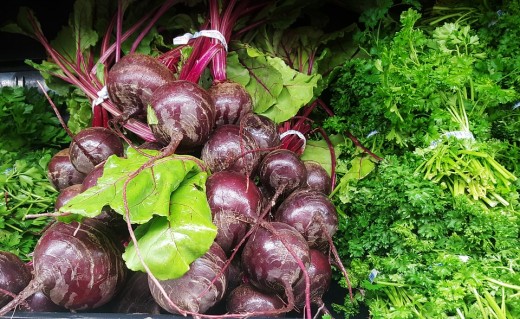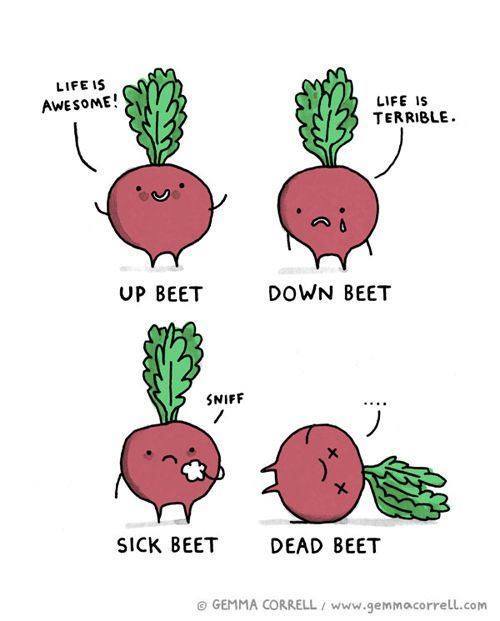- HubPages»
- Home and Garden»
- Gardening»
- Organic Gardening
Growing Beets in the Home Garden

Beets-Love 'em or Hate 'em
Beets are one of those vegetables that we either love or we hate. I personally love beets. Beets are a nutritious dual-purpose plant that comes in numerous colors and provides a high yield in any garden bed. The instructions on the seed package say to plant beets in the full sun, but they can be grown in shady locations.
Nutritional Value of Beets
The beet greens can be eaten raw like lettuce or cooked as greens and provide vitamins A and C and more iron and minerals than spinach. The roots of this crop contain potassium as well as protein, fiber, iron, calcium, phosphorus, vitamins A and C as well as niacin. These roots store well in root cellars and can be baked, boiled steamed, or pickled to use as side dishes, in soups, and in salads. Iron, calcium, and vitamin A are better utilized by the body if the beets are cooked and eaten with some kind of vegetable oil (such as olive oil). However, vitamin C is best utilized if the beet greens are eaten fresh.
At A Glance: Growing Beets
Plant beets in the early spring as soon as the soil can be worked. In warmer climates, beets can be grown during the winter.
Planting depth: 1/2 to one inch deep
Distance between plants: two to three inches apart
Germination Time: 7-14 days
Time until the harvest: About 55 days for roots. Much sooner for leafy beet greens.
Beets come in many colors. The leaves and the roots can be eaten. Thin beet to give more room for the beetroots to grow and use the greens from the thinnings for beet greens.
Planting Beets
Like most annual vegetables, beets will grow faster in full sun, but they also will grow in semi-shade. Be certain that the garden bed in which you plant your beets has loose, well-drained soil that is free of roots and rocks and is dug at least a foot deep. Work as much compost into your soil as you can spare, but avoid manure, because this produces deformed roots.
Beets do best in temperatures between 60-65 degrees so where summers are hot, plant beets for an early spring, fall, or winter crop. Direct seed your beets into the bed. For an early spring crop, plant as soon as you can work the soil.
Dig a row about half an inch deep and sprinkle kelp powder down the row, then water thoroughly. Then place the seeds in the row about two inches apart. Beet rows should be about 6 inches apart and plant another crop between each row (see companions). Sprinkle a half inch of soil over the beets and firm soil around the seeds. Now sprinkle kelp powder over planted beets and again water thoroughly.
Plant beets successively (To plant successively means to plant a short row every so often over a period over a period of time) every two weeks until the weather gets hot. Plant in the middle of the summer in a shaded area for fall and winter crops.
Planting Buddies for Beets
Beets grow well with onions and bush beans, but do not grow well with pole beans. Mustard greens also will inhibit beet growth so do not plant them in the same bed. Lettuce and members of the cabbage family especially kohlrabi are friendly with beets.
Beets During the Growing Season
Most beets are not single seeds, but up to eight seeds in one capsule (which we often think of as being the seed). Therefore, you'll need to thin the cluster of seedlings when they are a couple of inches tall. Remove excess seedlings and use them as greens in salads.
It is critical that weeds are kept out of beets. Take the time to weed a couple of times until the beets are tall enough (2-4 inches tall), then mulch with grass clippings or well-rotten sawdust (The sawdust needs to have aged at least two years.) This will not only keep out weeds but will keep the moisture in the soil as well as keep the soil cooler. Be sure that the beets get at least one inch of water per week to keep the plants from going to seed and to keep the roots from getting tough.
By using these tips, you should have a little problem with diseases or pests in your beets. However, if you see that something has been eating the beet leaves, sprinkle them with a few wood ashes, DE (diatomaceous earth), or spray with soapy water with some powdered cayenne added and this will end this problem.
Beet Humor

Harvesting Beets
Throughout the growing season, you can harvest as much as half of the leaves without harming the roots. Roots are best when they are between one and one-half inches and three inches in diameter. Beets begin to deteriorate once they have reached maturity. To prevent damage to beets, pull beets by hand rather than digging. Shake off the soil and twist off leaves (do not cut off), leaving an inch or two of the stem so that the roots don't bleed.
You can keep beets for up to six months by layering undamaged roots between peat or sand and keeping them in a cool dark location. Beets may also be canned or frozen.
This content is accurate and true to the best of the author’s knowledge and is not meant to substitute for formal and individualized advice from a qualified professional.
© 2014 Cygnet Brown








